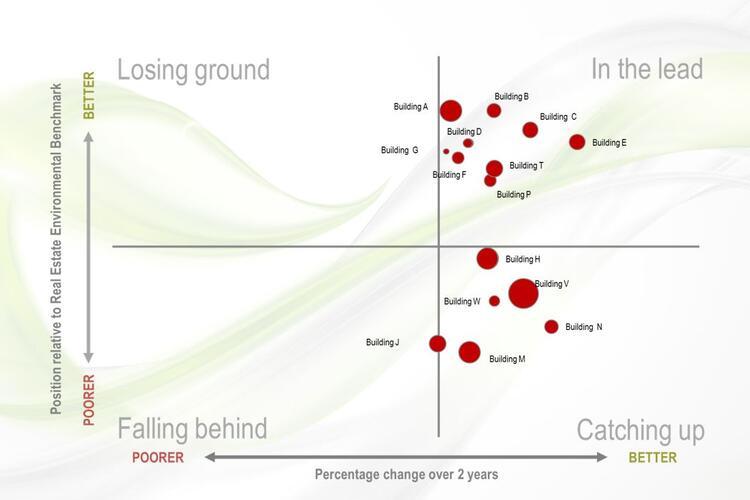LaSalle's Energy Reduction Programme
15 May 2015LaSalle's Energy Reduction Programme
15 May 2015LaSalle Investment Management started implementing its Energy Reduction Programme in June 2013 across UK assets with the largest energy consumption. Delivered in partnership with property managers, the programme has resulted in significant cost and carbon savings through small scale works targeted at reducing energy consumption and by incorporating efficiency measures into refurbishment projects. The Energy Reduction Programme is currently driving improvements across 6 million sq ft of commercial space, including multi-let offices, covered shopping centres and science parks.
Key Facts
- Delivered across more than 60 properties
- 15% energy reductions
- £1.2 million cost savings
- Three month payback on annual costs
- 5,641 tonnes CO2 savings
Situation and actions
LaSalle is a leading real estate investment management firm. As part of the firm’s efforts to reduce environmental impacts across its investment portfolio and business operations, LaSalle is delivering a highly successful Energy Reduction Programme across more than 60 properties, up from around 40 assets in 2013.
To kick-start the programme, LaSalle carried out a baseline review to establish the current status of each building and identify reduction opportunities.
Ongoing activities include:
- Benchmarking building performance against the Real Estate Environmental Benchmark to highlight good and poor performing buildings
- In-depth monitoring of energy use to identify low-cost opportunities, including Building Management System (BMS) optimisation, Air Handling Unit (AHU) heat recovery and LED lighting installation
- Engaging with site teams, including Property Managers, Facility Managers and Centre Managers to establish and deliver energy management action plans and reduction targets, as well as involving mechanical and electrical contractors at relevant points
- Delivering energy management workshops to centre managers to share successful energy reduction initiatives between buildings and help them learn from best practice and what works
- Encouraging occupier engagement by providing Property Managers with material they could use to engage with occupiers on energy efficiency opportunities
- Quarterly property-level, fund-level and house-level reporting of energy performance and progress against targets
- Enabling Asset Managers and Fund Managers to evaluate actions that require capital expenditure, and communicate the programme results to clients through quarterly fund reports.
At Colman House, an office building in Maidstone, LaSalle and the property manager reduced energy consumption across landlord areas and shared services by 70% through no-cost and low-cost initiatives such as:
- Reducing running hours of the gas fired boilers
- Installing motion sensors in all common areas and stairwells
- Replacing fluorescent lighting with energy efficient LED alternatives.
At Broadway Shopping Centre in Bexleyheath, LaSalle and the Centre Manager achieved 33% reductions by:
- Upgrading lighting controls, including motion sensors in all back of house areas and stairwells
- Reducing cleaning hours in the car park by two hours, after analysis of half hourly data revealed an opportunity to deliver energy savings by adjusting the cleaning rota
- Optimising BMS settings, such as heating set points
- Switching the boiler off during the summer.
Benefits and financials
- Energy reductions: 7% energy reductions in year one (exceeding 3% target) and 15% to date in year two
- CO2 savings: 5,641 tonnes over two years
- Annual cost savings: £1.2 million
- Payback on investment: three months
- Capital expenditure: the majority of savings have required zero or very little investment.
Challenges and Achievements
FUNDING
Who should fund the Energy Reduction Programme?
The occupiers benefit directly from the energy cost savings being achieved and therefore, the cost of running the programme is recharged to occupiers via the service charge. This results in reduced overall occupancy costs for occupiers and no costs to LaSalle’s investors. A win-win for all involved. LaSalle also focuses on properties with the highest energy costs and service charge budgets, as these are where the greatest energy and cost savings can be made for occupiers. This approach is then coupled with occupier engagement to ensure that occupiers understand and buy-in to the programme.
DATA
How to get meaningful data to see what’s really going on?
In most of the buildings where LaSalle is delivering its Energy Reduction Programme, the company has half-hourly metering. This is essential so that the building and energy managers can see nuances in consumption over the course of a day, week, month or year that offer reduction opportunities, whether it’s a spike in consumption at 2 o’clock in the morning when equipment should not be coming on or the chance to reduce running times for heating and cooling.
OPPORTUNITIES
How to make efficiency business as usual?
Resource efficiency is becoming more important to LaSalle’s clients, particularly with new legislation around energy efficiency. It is therefore of growing importance in how LaSalle manages its properties, helping to ensure that the firm’s assets remain attractive to occupiers, have low occupancy costs and are protected against emerging regulations. Property Managers, Facility Managers and Centre Managers are essential to the success of the programme in each asset, delivering the action plans and working to identify further reduction opportunities. In addition to engagement activities and workshops, each quarter, LaSalle shares charts showing how each property is performing relative to comparable buildings, adding an element of friendly competition to the programme.
All data in this case study is correct as at 30 April 2015. Figures have been normalised by weather (heating degree days) and void rate. This enables external weather conditions and changes in occupancy to be taken into account when assessing the energy performance of buildings.
Find out more
Sophie Carruth (maternity leave)
Head of Sustainability - Europe
Emma Hoskyn
Head of Sustainability - Europe
www.lasalle.com/sustainability
*Please note that the information on this page was supplied by the BBP Member and the BBP assumes no responsibility or liability for any errors or omissions in the content


